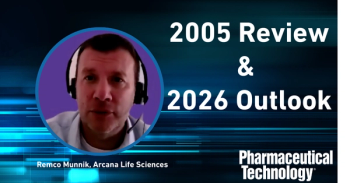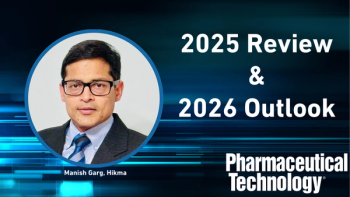
Problems With Ranitidine May Transcend Manufacturing Issues
The root cause of NDMA contamination may go well beyond manufacturing problems, to the molecule itself.
As ranitidine recalls continue, global regulators are assessing levels of contamination by the carcinogen, N-nitrosodimethylamine (NDMA) in the drug and its potential impact on patients, since the drug has been widely prescribed for over thirty years. A histamine-2 blocker (H-2), ranitidine blocks excess acid secretion in the stomach and is prescribed to treat problems ranging from acid reflux and heartburn to ulcers.
On October 2, 2019, the FDA
Prompting this move was a
As noted in the petition, where FDA had established a safe daily intake limit of 96 ng for NDMA, Valisure testing, using ISO-certified methods, found levels of NDMA in excess of 3 million ng per tablet when ranitidine was tested at conditions mimicking those in the human body.
FDA and EMA have addressed potential manufacturing-related causes of contamination in messages to manufacturers. However, Valisure’s tests, and past studies published by Stanford University, suggest that the ranitidine molecule is inherently unstable and can release NDMA within the human body and when exposed to high temperatures, specific chemicals, and other conditions.
“Our concern is that potential problems are being minimized. Testing suggests that there are several conditions by which the [nitrosamine] impurities can form, in the lab, in the stomach, and elsewhere in the human body,” Valisure CEO David Light told Pharmaceutical Technology in a September interview.
Problems with high-temperature lab testing
Originally, Valisure had equipped its QC lab with FDA-recommended gas chromatography/mass spectrometry (GC-MS) analytical systems after NDMA and other nitrosamine contamination had been detected in valsartan and other sartans in the supply chain, says Light.
However, the company found that, at oven temperatures of 130 °C, ranitidine can react with itself, generating extremely high levels of NDMA, according to its petition. As a result, Light said, Valisure changed its analytical testing protocol so that it runs at 37 °C, the average temperature of the human body. As the petition explains, the lower-temperature method was validated to a lower limit of detection of 100 ng and used for a variety of biologically relevant conditions of the human body.
FDA has contested Valisure’s results. In its October 2 statement, the agency noted that scientists at its labs and at those of other global regulatory agencies had found much lower levels of NDMA using the LC-HRMS method than Valisure had found. FDA’s new method runs at lower temperatures than the GC-MS method used to test for NDMA in sartans. However, FDA noted, even early and limited testing has detected “unacceptable levels” of NDMA in the samples. Previously, the agency had described these levels as “low.”
Tests simulating conditions in the stomach
Besides using the customized GC-MS method, Valisure tested ranitidine tablets in conditions designed to simulate those in the human stomach and intestine using standard “Simulated Gastric Fluid” (“SGF” 50 mM potassium chloride, 85 mM hydrochloric acid adjusted to pH 1.2 with 1.25 g pepsin per liter) and “Simulated Intestinal Fluid” (“SIF” 50 mM potassium chloride, 50 mM potassium phosphate monobasic adjusted to pH 6.8 with hydrochloric acid and sodium hydroxide) methods. These tests were performed in 100-mL reaction volumes with one 150-mg tablet of ranitidine for each test, the petition states, and results suggested that significant amounts of NDMA are formed under simulated gastric conditions when nitrite is present.
Previous medical research by Stanford
Work by Stanford researchers in 2016 suggested that the ranitidine molecule itself might be unstable. In this
“The Stanford research found less than 1% in urine, suggesting that the remainder of contaminant could remain in the human body, which could potentially mean millions of nanograms of exposure,” says Light.
Valisure also used molecular modeling to test biological mechanisms that might generate NMDA, Light says. “We didn’t have real insight into the biological causes but, using open-source tools we developed computational models that found that the enzyme dimethylarginine dimethylaminohydrolase 1 (DDAH-1) can bend ranitidine and break it down to form NDMA.
Few epidemiological studies done
The petition noted that few epidemiological studies have been conducted on ranitidine, and that
Light stands by the findings cited in Valisure's citizen’s petition, noting ranitidine’s instability at high temperatures and the fact that both the nitrite “N” and dimethylamine “DMA” are present on the molecule. Citing results of studies run in other industries that show how the molecule can degrade after exposure, not only to heat, but to chlorine and ozone, Light raises the possibility that the contaminants could form during temperature excursions, when product is transported. He also cites
Fundamentally, Light says, “NDMA contamination is simply a byproduct of the instability of the ranitidine molecule. The significantly more serious problem is ranitidine's potential to form millions of nanograms of NDMA, a known carcinogen, in the human body. “
FDA and EMA efforts continue
On Sept. 13, 2019, both the European Medicines Agency (EMA) and FDA launched renewed efforts to understand the root cause of the contamination. Rantidine represents the third group of drugs to be affected by trace levels of NDMA and other nitrosamine contaminants. First was contamination in angiotensin II receptor blockers (ARBs), notably valsartan but other sartans as well, and the APIs used to manufacture them. The news triggered voluntary product recalls in more than 23 countries, global regulatory reviews, and investigations into the root causes of contamination. In April 2019, low levels of NDMA were found in some batches of pioglitazone, a treatment for diabetes.
Valisure had sent a petition to FDA in June 2019, noting that its testing had detected unsafe levels of the carcinogenic contaminant dimethylformamide (DMF) in valsartan and other sartans, and asked the agency to clarify acceptable limits. Currently, FDA has set the permissible exposure limit at 8,800,000 nanograms, according to the petition, which is 9,166,667% higher than the acceptable intake limit of NDMA. “This disparity lacks a rational basis and is of significant concern, particularly because of Valisure’s recent findings that high levels of DMF exist in certain on-market lots of valsartan medication,” the petition noted.
Both
As FDA spokesman Charlie Kohler notes, FDA continues to study the problem with other global regulatory agencies, and is posting
No new guidance planned
At this point, Kohler says, FDA has no plans to update guidance on toxicology of mutagenic compounds, as spelled out in the agency’s March 2018
“This is an internationally-harmonized guidance that both regulators and industry have agreed to. To implement the risk assessment for any genotoxic impurity, there has to be recognition that it can occur in the manufacture of the product. The guidance lays out the conditions under which these risks can occur, and the steps that manufacturers should take to test for these potential impurities,” says Kohler. The recommendations in this guidance are for manufacturers of drug substances and drug products and do not create a separate standard for innovator drug products as compared to generic or OTC drug products, especially in the context of “cohort of concern” impurities such as nitrosamines, he says.
A new business model
The petition has brought publicity to a small, relatively new startup and raised some questions of why a pharmacy would get involved in testing and quality issues that are normally considered the manufacturer’s responsibility. As Light explains, Valisure’s business model is quite different from that of the typical online, or even bricks-and-mortar pharmacy, which does not typically re-test medications for safety and quality. Valisure performs quality control tests on medications before distributing them, to validate their quality. The company initially found the contamination during routine testing of products that it was going to distribute.
Although it stands outside the world of current good manufacturing practices, Valisure had its analytical laboratory inspected by FDA in 2018. Because it is not a manufacturer, Light says, "the citizen's petition was the only effective option that we had to notify FDA of our findings."
Light first had the idea for the company, which officially launched in August 2018, when a friend began to have trouble with side effects from generic anticonvulsant medications. Variability can be a problem with some generic formulations. "We looked at medical studies of antiepileptic medications and saw that the risk of having a seizure can increase two-fold when anticonvulsant prescriptions are refilled with generics that have been produced by different manufacturers," Light says.
“We saw that nobody is checking at the end of the distribution chain,” Light says. The company invested in spectroscopic equipment, focusing on Raman, and laser analytics, developed some proprietary technology and algorithms, filed patents, and then applied for and received ISO 17025 accreditation.
Valisure puts every batch of medication it distributes through dissolution profile testing and analysis (destructive analytical methods are used on samples from each batch). If it passes, it is dispensed with a certificate of analysis, says Light.
The company is seeing increasing interest in its model from physicians who would like to have the option of prescribing validated generics. “Getting prior authorization for patients to get name-brand drugs is time consuming and difficult. The validated generic option offers a way around this, to ensure quality and assure patients that they are receiving a high quality medication that just happens to be generic,” says Light.
Having the ability to verify the quality of a generic or OTC drug would also be a benefit if US Congress decides to permit the re-importation of pharmaceuticals, e.g., from Canada, Light says.
In March, Valisure launched a partnership with the pharmacy benefit manager Capital Rx, which offers access to Valisure’s pharmacy to its customers. Valisure is also involved in discussions with Civica Rx, which focuses on novel strategies for addressing drug shortages and high drug prices, on potential partnerships, Light says.
We can expect to learn much more about ranitidine’s chemistry, toxicology, and health impacts, as regulators and the industry explore the potential root causes of ranitidine contamination from every possible angle. “These cases may well be the tip of the iceberg," says Light. "But at the very least they point out cracks in a very complex, global system and supply chain.”
In general, Light says, the pharmaceutical industry has a good system in place for safety and quality, but it still depends on self-reporting, which can be problematic. “Consider the aviation industry and the Boeing 737 Max. An exploding plane is very visible, but the impacts of any safety issues with medications are not always so clear,” he says.
References
1. Zeng, T. and Mitch, W.A. (2016). Oral intake of ranitidine increases urinary excretion of N-nitrosodimethylamine. Carcinogenesis, Vol. 37, p. 625-634
2. Thomas, J.M., et al. (1987). Effects of one year's treatment with ranitidine and of truncal vagotomy on gastric contents. Gut, Vol. 28, 6, p. 726-738
Newsletter
Get the essential updates shaping the future of pharma manufacturing and compliance—subscribe today to Pharmaceutical Technology and never miss a breakthrough.




